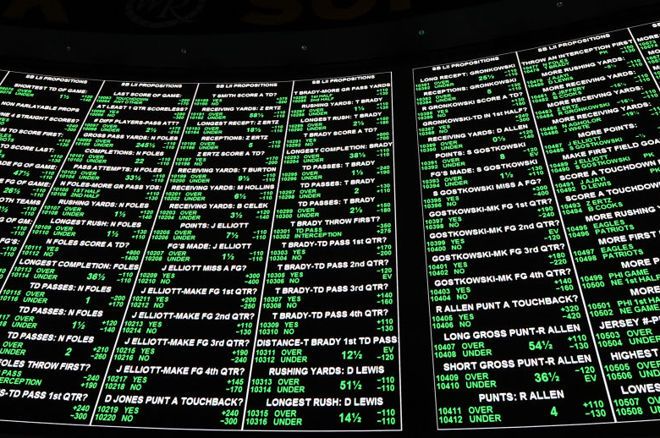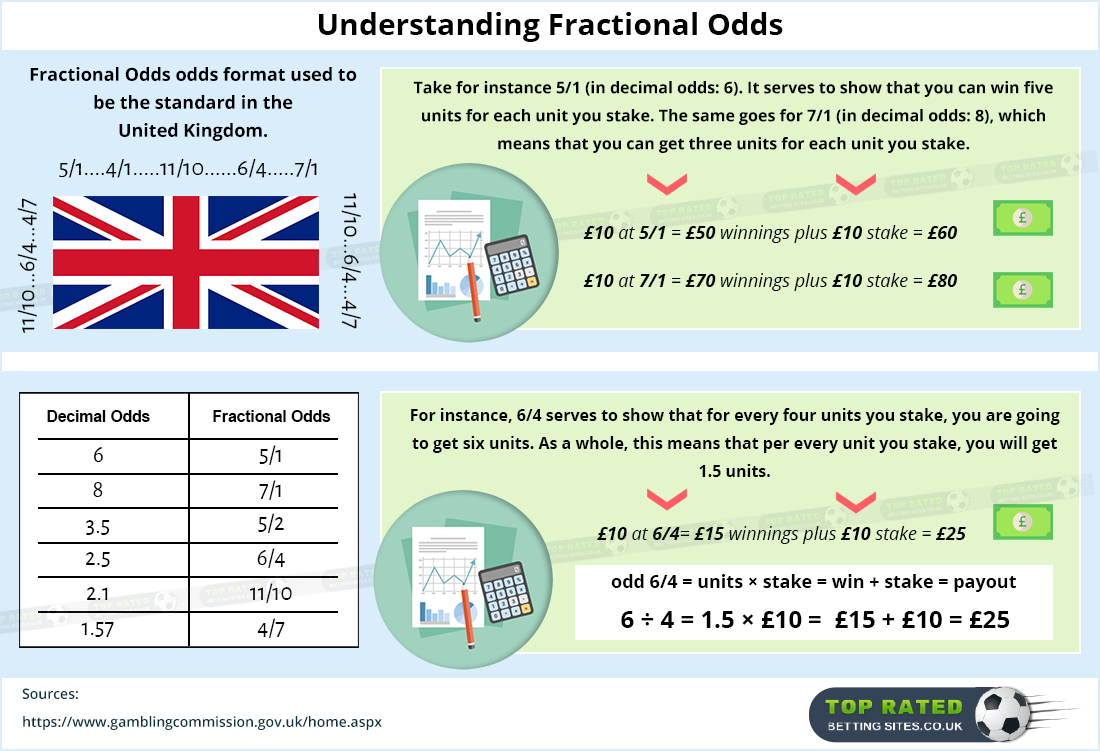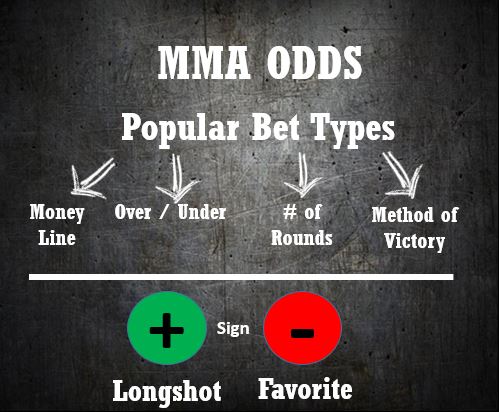Sports Odds Meaning
Posted : admin On 7/28/2022If you've never set foot in an actual sportsbook before or logged into an online sportsbook, the chances of you getting overwhelmed when you actually do is very high. In an actual Las Vegas sportsbook, there is typically a lot of commotion and the odds and lines are displayed on a massive digital board for everyone to see. When a novice sports bettor looks at the massive digital signage, they will see a bunch of numbers, both positive and negative, some two digits, some three digits. They also won't have a clue what any of it means. The same can be said for the online sportsbooks. It looks like a massive spreadsheet with negative and positive numbers beside each teams' name.
Odds represent the likelihood of an outcome occurring. In sports betting, each team is assigned odds that represent the likelihood of them winning the game. When the odds for two teams are even, meaning 1 to 1, it means that each team is equally as likely to win the game. If Team A is assigned 2 to 1 odds, it means Team B is twice as likely to win.
- Let’s say, hypothetically, odds are 11/8, meaning if the fight happened 19 times (11 + 8), Alvarez would lose 11 times and win 8 times. Therefore, the probability of Alvarez winning the fight is calculated by dividing 8 (the number of times he would win) by 19 (the total number of trials).
- Fractional odds are one of the oldest forms of odds in sports gambling and are more popular in the UK market. Basically fractional odds show you how much you are set to win relative to how much you put in. Again, we’ll keep this simple with an easy example. Say you make a bet of $5 on Team A to win with the odds of 2/1.
The easiest way for me to describe what all these numbers mean to you is to define it as point spread betting. Point spread betting is the most popular way to bet on the NFL and NBA, and it is a way for a sportsbook to generate betting interest on both sides.
Linemakers who work for the sportsbooks must put out lines that will entice the 'favorite' bettors to lay the points and take the favorite or entice the underdog bettors to take the points with the underdog.
As an example, let's say you are looking to place your very first wager on the Super Bowl. You look at the matchup either online or at a Las Vegas sportsbook and this is what you see:
Kansas City +4.5 (-110)
Carolina -4.5 (-110)
How Do Point Spread Bets Work?
Using the example above, the linemakers have determined that the Carolina Panthers are 4.5-point favorites over the Kansas City Chiefs. The favorite team can also be referred to as the chalk . The favorite will always be represented by a negative (-) number, while the underdog will always be represented by a positive (+) number.

Based on the line above and which team you decide to bet on, the Panthers must win by five or more points in order for those with a Panthers (-4.5) ticket to be declared a winner. As long as the Panthers win by five or more points, the final score itself does not matter. A 10-0 win is just as much a winner as a 56-50 win.
However, if the Panthers were to win the game by four or less points, then all Panthers backers can toss their tickets in the trash. A 17-14 or 21-17 Panthers win would cash the tickets with Chiefs +4.5 on them. A Falcons outright win as 4.5-point underdogs would do the same.
What is the -110 Line?
The standard price to pay when betting on point spreads is (-110). This is the sportsbooks way of ensuring a profit no matter which side covers the spread. The extra 10 cents is also known as the 'juice' or 'vig' . Paying the extra 10 cents is like paying a tax or commission to the sportsbook for brokering the bet.

The -110 line means that in order for you to profit $100 you must wager $110. Some sportsbook offer something called 'reduced juice' , which means that you can still profit $100 but the risk is a few dollars less.
For example, if you see reduced lines such as -7.5 (-105) that means that you must risk $105 dollars in order to profit $100. If you see -7.5 (-102) then you must bet $102 in order to profit $100. It may not seem like a big deal at the time, but saving a few bucks each time over the course of the season can really help your bankroll.
Which brings me to my next point. If you are serious about getting into sports betting, it is vital to have more than one sportsbook to make a wager at. Shopping around for the best lines will help your bankroll and you will be able to turn a bigger profit. If you see a pair of sneakers for $110 at one store, and the exact same pair is $102.99 at another store - which store are you buying them from?

What is a Push?
Sports Odds Meaning
When betting the point spread, there is almost always a winner and a loser. However, in some instances sportsbook decide to put out a whole number such as -3 for bettors to bet on. If the final score ends with a differential of three points - no matter who wins - the bet is considered a 'push' and all money is refunded to both sides since neither team covered the spread.
What does Pick'em or PK Mean?
When two teams are evenly matched, and the sportsbook can't decide which team should be the favorite, they will release PK lines which means neither team is favorite. The team you wager on must simply win the game by any score in order for your ticket to be graded as a winner.
Sports Betting Odds Meaning
What Happens When the Point Spread Changes?
This is a very common occurrence throughout the sports betting industry. Sportsbooks have the right to shift the spread or odds for any given match prior to it starting. Many factors play a huge role in this decision, and they include injuries, weather, the volume of bets on one side, and anything in between. Depending on the time you place your wager, the bettor may also have an advantage or disadvantage based on which way the spread has shifted.
For example:
Sports Odds Explained Over Under

Opening Line: Carolina -4.5 vs Atlanta +4.5
Thursday's Line: Carolina -2.5 vs Atlanta +2.5
If bettors were quick to jump on the Atlanta line at +4.5 when it first came out, they would have a distinct advantage over those who waited closer to kick off and were stuck with +2.5. The opposite holds true for Carolina. Bettors that were quick to pull the trigger are now laying two more points than they would if they were patient and saw the line movement before making their move.
Doc's Sports is offering $60 worth of member's picks absolutely free - no obligation, no sales people - you don't even have to enter credit card information. You can use this $60 credit any way you please for any handicapper and any sport on Doc's Sports list of expert sports handicappers. Get $60 worth of premium members' picks free .
How NFL Odds, Lines, Point Spreads and Totals Work
When you wager on NFL football it’s important that you understand clearly and concisely how to read odds and how they work. This is basic information that you must know in order to make informed bets.
You’ll need to know how the rotation number, point spread, moneyline and over/under are used and what each means. Each of these terms may be called by another name. The rotation number if often referred to as the number or the rotation mark, moneyline becomes line, point spread is called the spread, and over/under becomes the total. When you come down to it, these are the major terms that can be lumped under the heading odds.
Bookmakers use odds to even out the bets, getting gamblers to wager on both sides of the line by leveling the playing field. Although there is overall parity in the NFL, there are teams that are haves and others that are have-nots. Indianapolis is still superior to Cincinnati but when they play each other the bookies have to get about half of the bettors to put cash on the Bengals. This covers the sportsbooks ensuring they’ll make a decent amount of cash on just about every game.
When you read NFL odds, you’ll first see the date and time of the game on the left and then immediately to the right, there will be two numbers with the name of each team next to one of each numbers. That number is called the rotation number.
Rotation numbers are standard from sportsbook to sportsbook. The number becomes a way to refer to the game and team without mentioning the teams name. It’s a sort of shorthand. Also, the rotation number allows each book to list the games in the same order—numerically. It is, in essence, a way to keep all of the games that are posted each day and throughout the week organized. That makes it easy for the bettor and the bookie.
As an example, let’s consider a matchup between the Indianapolis Colts and the Cincinnati Bengals. In our scenario, the Bengals are the home team, which means they will be listed last and the Colts, as the visitors, will be on the odds slip first. If Indy’s rotation number is 101, then Cincy’s rotation mark would be 102. When you place a bet live at a Vegas sportsbook or over the phone, you would say the number of the team on which you want to wager and not the name.

| Date/Time | Rotation Number | Team | Point Spread | MoneyLine | Total |
| Sep 15 | 101 | Indianapolis | -10.5 | -380 | 37.5 |
| 1:00 | 102 | Cincinnati | +10.5 | +255 | 37.5 |
To the right of the team’s name are the different types of odds. Usually the spread will be first. You may then see the moneyline (although some books list these on another slip) and then, finally, the over/under. Thus, all of the basic bets are in one place, allowing for easy access.
The point spread, which is the most popular type of bet, lists the favored team with a minus sign and a number and the underdog with a plus sign and the same number as the favorite. (If neither team is favored, they will be listed as EVEN or PICK.)
The team that has the minus sign, which is the favorite, has points deducted from its final score, while the dog, with the plus sign, has points added. The favorite must beat the spread, which means they have to win by more than the negative number to pay off. The underdog pays off in two instances—if they win outright or if they lose by less than the spread.
In our scenario, Indianapolis is at -10.5 and Cincinnati at +10.5. If you bet on the Colts at -10.5, which means they are favored, they must win by 11 or more for you to collect on your bet. If you wager on Cincinnati, which is the underdog, your bet pays off if they win the game outright or if they lose by less than 11.
Sometimes with NFL odds you’ll see a spread posted as a whole number. Decimals or fractions are usually utilized to ensure there won’t be a tie. If in our example the spread was reset to 10 with the Colts favored and they win by 10, then the game is considered to be a tie, which in betting terms is called a push. If there is a push all bets are off and the sportsbooks return all wagers back to the bettors.
Many people will say that the odds on a spread bet are even, paying 1:1. But this is not true. The actual odds are 0.90:1. For every dollar bet, you can win 90 cents. When checking out the spread, you’ll usually see a number listed next to each spread. That number, which is your stake, is posted as -110. This number tells you how much you have to bet to win $100. If you put $110 on either team, you stand to win $100. If you bet $11.00, you can win $10.00. Every NFL point spread works this way.
The moneyline is different. First, with the moneyline whichever team wins the game pays out. There’s no giving or taking away of points. How do the bookies even the playing field with the moneyline? They do it by making bettors wager more on the favorite to win less and allowing them to bet less to win more on the dog. The favorite is posted with a minus sign and a number. That number represents the amount of cash that has to be wagered in order to win $100. The underdog, on the other hand, is listed with a plus sign in front of a number. That number shows how much a bettor wins when they bet $100.
Taking the exact same match up and odds above, Indy would be listed at -380 and Cincy at +355. When wagering on the Colts, the favored team, a sports bettor would be required to bet $380 to make $100. If they take the Bengals, who are the underdog, a $100 bet can result in a $355 profit.
By the way, there is a relationship between the spread and the moneyline. The exact relationship can vary a bit depending on the book, but the correlation works in this manner:
| Point Spread | Money Line |
| -1 | -120/+100 |
| -2 | -130/+110 |
| -2.5 | -140/+120 |
| -3 | -155/+135 |
| -3.5 | -175/+155 |
| -4 | -200/+170 |
| -4.5 | -220/+180 |
| -5/-5.5 | -240/+190 |
| -6 | -270/+210 |
| -6.5 | -300/+220 |
| -7 | -330/+250 |
| -7.5/-8/-8.5 | -360/+280 |
| -9/-9.5 | -400/+300 |
| -10 | -450/+325 |
When considering NFL odds, the last type of basic bet you’ll see listed is the total or over/under. The over/under is a prediction regarding the total number of points that both teams will score. As it is with the spread, the total is usually posted as a fraction or decimal and the stake is the same as it is with the point spread (-110)
With NFL odds the over/under can vary but usually it’s somewhere between 35 and 47 points. Let’s say in the Colts and Bengals game that the total is posted at 37.5. If Indy scores 27 and Cincy gets 13 points, the total would be at 40 and the over would win. But if the Colts rack up 35, and they shut out the Bengals, the total of 35 would be under.
If, as it is sometimes with the spread, the total is listed as a whole number, the result may be a push. Let’s say the total is 37 and the Colts score 24 and the Bengals 13 for a total of exactly 37 points. If this happens all bets are returned on the push.
If you are able to interpret NFL odds and know what the various terms mean, such as the rotation number, point spread, moneyline and over/under, you’ll have a basic understanding on what you are betting. Prior to wagering make sure you see our NFL odds page, which carries all the latest odds from the top online sportsbooks. Remember that the odds makers are attempting to even the out the bets on each game. The sports bettor has to analyze each game and the odds and make their bets accordingly in order to win cash.